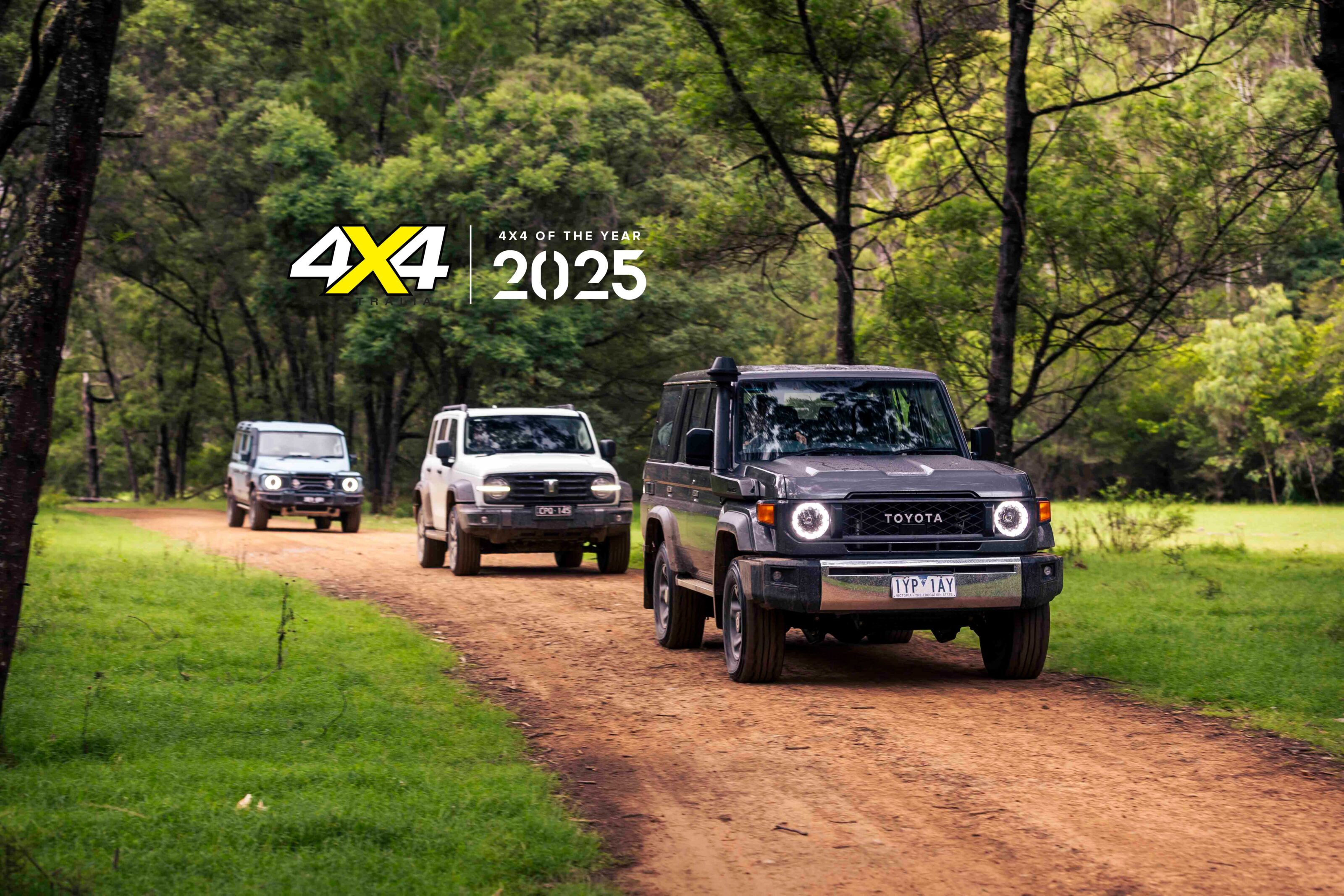Seventy years ago, when Maurice Wilks scratched out the profile of what would become the first Land Rover in the sands of a Welsh beach in 1947, it’s doubtful Rover’s then technical chief had any inkling that his basic, box-on-wheels design would, in its final four-wheeled form, become so entrenched in global off-road culture.
The brand’s introduction to Australia happened soon after its 1948 launch, and since then the Green Oval badge has been a large part of our 4×4 scene, with Land Rovers serving as touring vehicles, competition rigs, army transport, and truly remote expedition rigs.
We sat down with three of Land Rover Australia’s (LRA) longest-serving employees – Geoff Stubbs, James Scrimshaw and Brett Lewis-Driver – to chat about the Brit off-road icon’s presence Down Under. With close to 100 years combined experience working for LRA, these guys have definitely seen it all.
An icy reception
For Australia – and unbeknownst to Wilks – the timing of his beach sketch was near-perfect; the country was just about to embark on its biggest-ever engineering project: the Snowy Hydro Scheme. The Land Rover Series I was revealed to the world in 1948 at the Amsterdam Motor Show.

In October 1949, the first Land Rovers arrived in Australia, just as the Snowy Mountains Authority realised it needed a robust, go-anywhere vehicle to transport engineers, field workers, office staff and supplies through the rugged alpine country that the Snowy project comprised (until that point, they’d been relying on horses).
As well as the rugged terrain, the Scheme saw up to 100 temporary camps and more than 1500km of roads and tracks. The new Land Rover fit the bill for this, and so began its long relationship with Australia.
The initial number of Land Rovers used by the Snowy scheme was small, only growing after the first few years; in 1953 the fleet was expanded significantly, and by the late 1950s there were more than 300 Landies trundling around the Snowy region, of varying types (initially 80-inch vehicles, but soon joined by the Series I wagon and derivatives, even including wagons with Perspex roofs for when members of the Royal Family visited).

On top of this was the additional number of vehicles used by private contractors in the region. In total, there were more than 715 Land Rovers on fleet over the 15 years from 1951 to 1966.
The Snowy Scheme is a long time ago now, but it hasn’t lessened LRA’s appreciation for how that project influenced the brand’s presence here – even today.
“It’s a great story – and great history,” says James Scrimshaw, Product Public Affairs Manager, Jaguar Land Rover Australia (JLRA). “Every photo you go back and have a look at in regards to the history of the Snowy Mountain Scheme, they feature a Land Rover somewhere in it … it’s an important part of our history for us.”

James also mentions the rural and farming communities in Aus, who took to this ‘new’ go-anywhere vehicle straight away, thanks to its ability to lug plenty of gear for that fencing job, sheep mustering, or general farm inspections.
Even today, driving through this vast country’s rural and outback areas, it’s a solid bet that you’ll spot at least a few Landies, from any era and in various states of being, parked in fields or near farm or station houses. And it wasn’t only the cockies and civilian departments that became part of the Australian Land Rover family.
Defensive manoeuvres
It’s hard to know what passing motorists must have thought as they were driving along the Eyre Highway on the Nullarbor Plain, only to be confronted by a group of three heavily modified, SAS-spec Long Range Patrol Vehicles, complete with helmeted drivers.

Geoff Stubbs, Senior Network Analyst JLRA can remember, though; after all, he (along with Brett Lewis-Driver) was one of the drivers charged by Land Rover and the Australian Defence Force (ADF) with the delivery of these highly modified Landies to SAS HQ in Western Australia.
Geoff Stubbs elaborates: “When we produced the two first ones for the SAS – who were based in Perth, of course – we were going to put them in the army system to deliver them,” he remembers. “The army said it would take about two-and-a-half months. We thought ‘bugger it’, so we drove them over. It took us three days.”
Brett Lewis-Driver, Network Development Manager JLRA, chimes in. “It was really fun driving because you’d have to drive it with a helmet on (the LRPV had no roof). I remember driving it down to Canberra and then going through Macca’s drive-through in an LRPV – it was quite cool!” he laughs.

This was just one humorous moment in a very long relationship between Land Rover and the ADF that began back in the 1950s. Things got far more serious – and more interesting – when Land Rover won a government contract bid in 1980 to produce both one-tonne and two-tonne vehicles for the ADF.
Interestingly, Land Rover was not alone in chasing military business; Jeep and Mercedes-Benz also put in bids for the one-tonne vehicle contract, and Benz also threw its hat in the ring for the two-tonne work as well. Once contracts were won, it got very busy…
“The trials started in 1984, we got the contract in ’86 and started supplying,” says Stubbs. “We supplied some subsequent stuff, some of which we call Light Green vehicles, which are not the full military-spec vehicles.”

LRA had, at Moorebank, NSW, what Stubbs dubs “the world’s shortest production line, at 30 feet in length” for the military vehicles and produced “one-and-a-half vehicles a day” during the course of the contract. Production speed was slow out of necessity; the ADF wanted a large number of variants, from officer transport to ambulances, to gun carriers, to mobile rocket launch pads. The Army Landies built in Australia were the true definition of ‘hand-built’.
“The whole way it was approached, rather than go okay ‘we want this’ and then off the order went, they wanted all sorts of derivatives,” Stubbs says.

“Every time the people running Perentie spoke to the users, they wanted something different. So what we would do was build up a spec to as close as we could get to what they wanted in discussion with them, build a couple of them and send them off for user acceptance trials, get them back and finalise one before turning it out. So you got a huge number of derivatives; the smallest number was the SAS Long Range Patrol Vehicle – we made 27 of them.” (The LRPV were a true ground-up build, says Geoff, due to the unique requirements.)
Brett Lewis-Driver was working as a mechanic on the Army project at that point, and further explains how hands-on the Perentie team was.
“You look back and it was such an amazing place to work; the people there were great. You’ve got a whole crew of draftsmen drawing up chassis or drawing up components that needed to go into the car, and we’d sit downstairs and make them. And the best bit was half the time trying to break them.”

James Scrimshaw was also involved. “During that period there was a huge range of vehicles, ambulances, etc.,” he says. “My role was doing scheduling, telling these guys what to build each week. You know, ‘two ambulances, one LRPV for this week’. Next week it was something else. We had a full parts supply based out of Sydney; we had a bunch of mum-and-dad businesses all building parts. Some of the people we still work with now, and we still supply parts for army Land Rovers right now.”
The local influence
Speaking of Army Land Rover parts, one of the ‘small’ problems the LR team had to solve was that of the centre diff.

“All the army Land Rovers were using the LT95 gearbox – the original four-speed ’box – and one of the weaknesses was the differential in the centre that distributed drive front and rear,” Stubbs explains.
“If you didn’t put it in before you went off-road you got a lot of shuffling of power back and forward and it would eventually fail. Put it in, lock the distribution front/rear and it was not a problem.
“Various people were trying various fixes, and one of the more interesting ones was getting hold of a whole bunch of railway sleepers, loading the vehicle to maximum gross weight and driving it in figure-eights. Nobody could stand driving it for more than an hour. We’d go through two to three sets of tyres a day doing it.

“We eventually figured out the problem and developed a fix for it which was not making it physically strong; it was a lubrication problem, so we Ni-For’ed the cross in the diff – Nickel plated, Teflon impregnated – and where we were getting a normal one (stock diff) lasting three-quarters of a kilometre, a strengthened one would last around 1.2 and we ran out of tyres doing the Ni-For one. It was really identifying the problem and doing something about it.”
The Aussie team produced the 6WD setup for the Land Rovers, and also solved one final ‘problem’: sourcing an appropriate powerplant.
As Stubbs recounts, “Because they wanted diesel and we only had a 2.25 which wouldn’t pull a soapy stick out of a dog’s arse, we had three different prototypes. I think we had a Ford engine in one, but the Isuzu engine was the easiest to put in because it was a four-cylinder so it was short.”

Isuzu’s 3.9-litre diesel was renowned for being noisy, leading to another Oz LR fix.
“We mounted the air cleaner on the engine; we had it originally mounted on the firewall,” says Stubbs. “The sheer amount of air coming in and the transference of noise were pretty horrendous; we mounted it back on the engine so it was silenced by the engine mounts. We got the noise down … and turned it out that way for the civilian market as well.”
Dirty deeds Down Under
It was March 1986 when the Camel Trophy 4×4 event arrived Down Under. The by-then famous off-road challenge had been held in some of the world’s most rugged locations, so it was only natural that organisers would choose the remote north of Queensland and the Top End of the Northern Territory in which to run the Down Under edition. Competitors were driving UK-spec short-wheelbase 90s, while the support crew enjoyed the extra space of 110 wagons.

The route started in Cooktown and headed west via a number of old bush tracks, across private properties and through numerous large and small waterways, then onto parts of what is now known as the Savannah Way.
Logistically, it was a huge undertaking, with LRA spending three months (and plenty of cash) preparing and planning for the event, which included a few recces (both airborne and ground-based). Geoff Stubbs was one of the men behind the planning, as well as a judge (along with John Ayre) on the event. He remembers how unprepared the competitors, and even more so the accompanying international media were for the, ahem, rather unique Aussie wildlife.
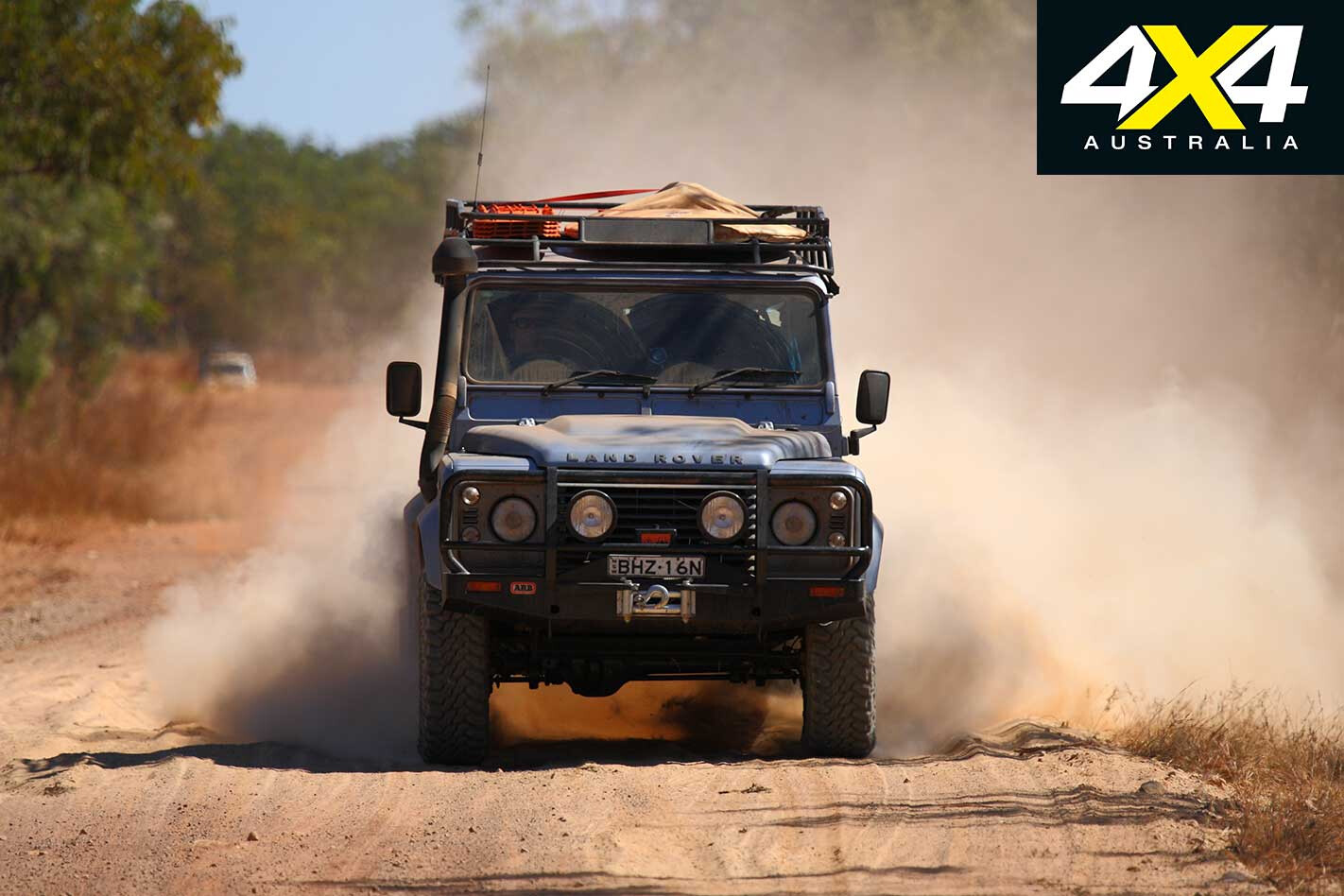
“Given it (the event) had mainly been held in places like Brazil … the journalists didn’t associate our form of desert or our type of terrain with danger,” he says. “For them, jungle equalled danger … we had a bit of a job persuading them that there were a few nasties around.
“I’ve got some fascinating memories of it,” he says with some amusement. “One of these was when we were crossing the Calvert and Robinson Rivers, and they were tidal where we were crossing – you’d put a stick in the water and you’d go back and see if the tide was going in or going out because you’ve got to cross at low tide.
“At this point in the event, people were getting pretty tired and would sleep all over the place. I went down with John Ayre to check the water and there was a crocodile coming out of the water – a fair sized one – so we bolted back, leapt over a Dutch journalist who was sleeping, and advised him to depart in our direction at fairly high knots!” he laughs.

Impressively, the vehicles got through unscathed, an impressive result when you see old footage of the Australian event with Land Rovers nearly totally underwater at some river crossing, or tipped on their sides on tracks, waiting to be winched back up so the team could continue.
The Camel Trophy is just one ‘event’ that has enhanced Land Rover’s reputation in Australia. Years later, in 2003, the company would run a similar event globally – the G4 Challenge – with an Aussie leg through WA’s Kimberley region.
Explorers’ Club
Land Rover has had a long association with exploration and adventure, both globally and here in Aus. Len Beadell is one of Australia’s celebrated modern explorers, using Landies during his many desert forays, while the Leyland Brothers completed the first east-west crossing of Australia in a Series III.

Another exploratory undertaking – by LRA itself – was a retracing of the 1896 Calvert Expedition a century later, in Discoverys. This epic adventure (led by the late Ian Glover) took participants through some of Australia’s truly remote country.
One of those, (former 4X4OTY judge) Phil Poulter, recounts on the LRA website: “One night I walked about a kilometre from our camp and sat on top of a tall sand dune looking back at the dull glow of our campfire … I thought to myself, ‘No human being has probably ever set foot in this place.’”
Even 4X4 Australia has enjoyed exploratory adventures aboard a Land Rover. In 2009, this writer was part of a small team charged with finding a route that would extend the NT’s Binns Track from its current northern termination point of Gregory NP to Litchfield NP farther north.

Driving a Defender following barely discernible old stock routes and crossing numerous rivers through remote parts of the Top End, it was an awesome, but in terms of the ultimate goal, sadly an unsuccessful adventure. However, it’s still one highly cherished memory.
Other 4X4 Australia expeditions utilising Land Rovers included the 2006 Madigan Line trip, with then-editor Dean Mellor piloting a Defender 130 dual-cab ute across the red heart of the country; Ron Moon’s 1995 “Footsteps of Hann” expedition through WA’s Kimberley region (Defenders and a Disco); and his 2004 expedition following the NT/QLD border south-north to the Gulf, with a Defender TD5 as the 4X4 Australia rig. And in 2014, Ron and current editor Matt Raudonikis both drove Discovery 4s as part of the Great Australian Bight Expedition.
Talkin’ bout our generation
Land Rover in Australia today is far removed from the brand of the 1950s. From a small model range for many years – Series/Defender and Range Rover – to today’s multiple models, it’s been a long, sometimes rough and winding, road for the off-road icon.

In 2018, sales are healthier than ever in the Australian market, spread across every model, from the Range Rover Evoque and Discovery Sport through to the top-tier Range Rover. The brand has an effective presence in every market niche in Australia now – bar one…
“We are sort of at a plateau point at the moment where we’ve reached peak until we get some new products,” says Scrimshaw. “Without having Defender in the line-up as well – that’s a big piece of the puzzle as to what the potential could be. Once we get that vehicle back into the mix you’ll see the numbers start to kick back up again.”
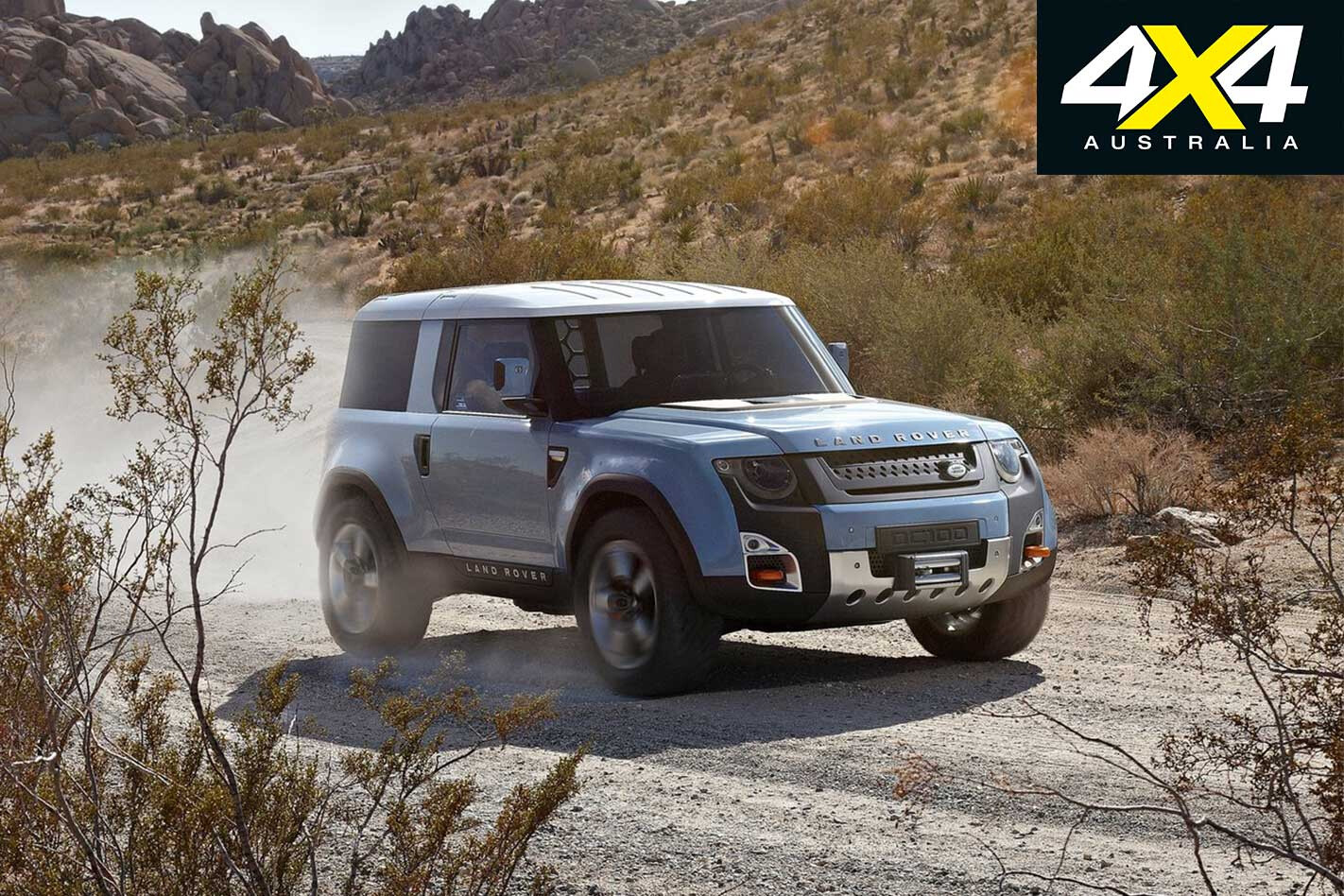
When asked about the new Defender the LRA trio go surprisingly quiet (besides mentioning the possibility of perhaps an expansion of dealerships into larger rural areas to cater for its future demand). James Scrimshaw, who has seen it, jokingly offered to draw the side profile silhouette for me.
Sadly, he only got to the two wheels before stopping, saying, “I can’t remember the rest.” I refrained – just – from clobbering him with my notebook…
On a serious note, it’s also impressive to see how the Brit company treats its global ‘family’. Brett Lewis-Driver cites the example of when Terrain Response was first introduced with the Disco 3, in terms of the actual input LR’s international branches have on the product.
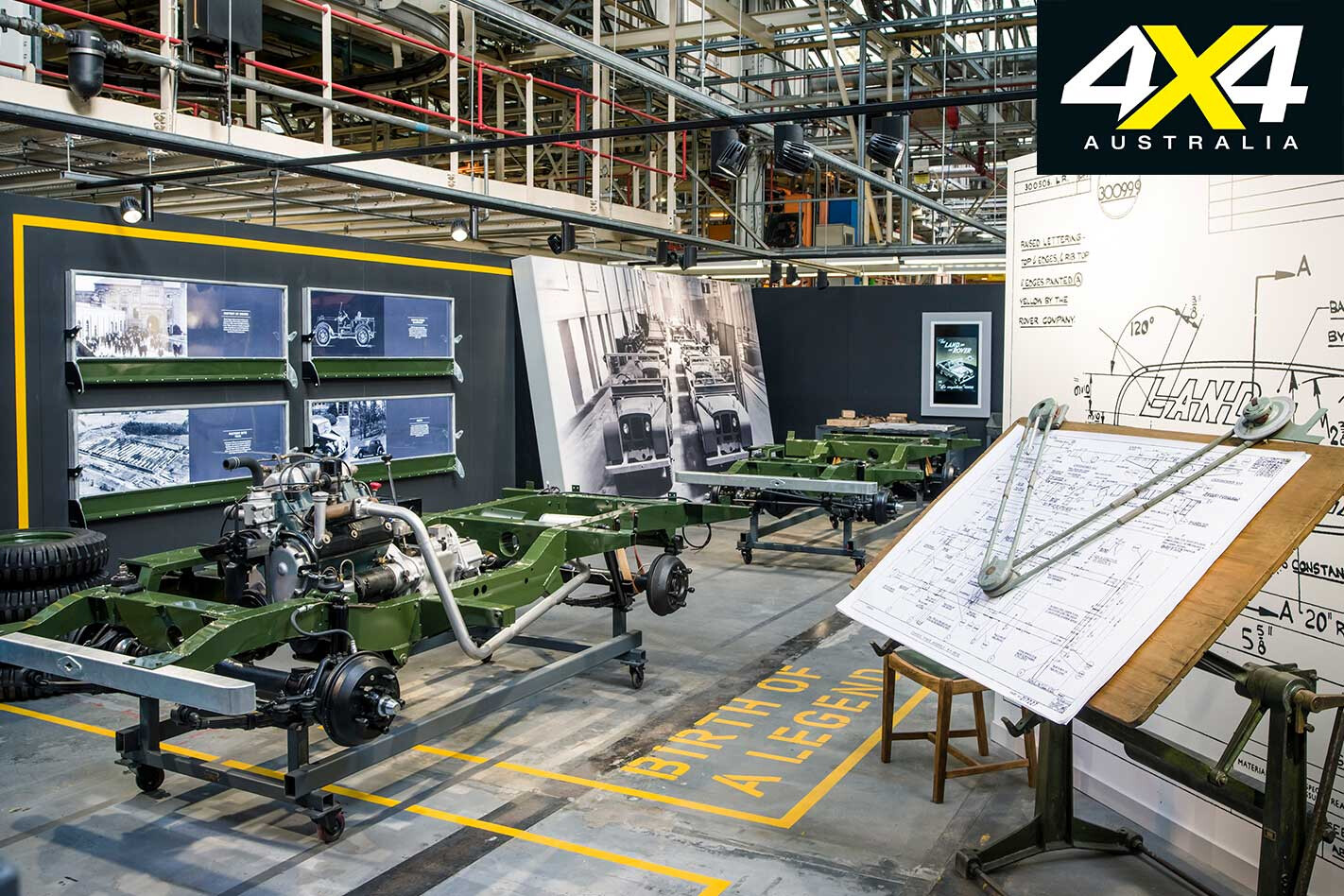
“I was part of the global, in-house off-road user group, so what we would do is gather all of the markets from around the world and go to one location and do presentations,” he says. “The engineers were always so excited about the markets’ presentations because they wanted to hear feedback as to what was working and what wasn’t.”
Geoff Stubbs sums it up best in terms of how the brand today still offers Australians that same chance for adventure, just with the added benefit (and comforts) of the brand’s technological developments.
“One of the things that put it into context for me (after starting off in the era of leaf springs), was when we brought in the latest Disco and I was running-in one of the launch vehicles,” he recounts. “I had a weekend to clock up maximum kilometres – you don’t pass that up. I got up at 5.30am on a Saturday and did 1400km in 16 hours. I am no spring chicken, but I got home and thought ‘f–k that was easy’.

“One of my prior experiences was driving a 6×6 Land Rover around Australia without air-con. It’s about 17,000km and the max speed was 97km/h. I don’t really want to repeat that! You’d get into the new Discovery to do that effortlessly and it just says it all in terms of the new tech.”
For off-road tourers in Australia – and indeed the globe – we can only hope those engineers involved in the upcoming Defender have also taken on board what the team from Down Under wants. Succeed in that and the Land Rover brand can look forward to even stronger ties to Australia, for many years to come.
The four-wheeled saviour
The Land Rover Discovery is, without doubt, one of the most significant models in Land Rover’s long history. That applies globally, but it was especially so here in Australia.

Up until its Down Under launch in March 1991 there was only the Range Rover and County for local buyers, with the former already climbing high in asking price and thus out of reach of a large percentage of buyers. The Discovery’s arrival – in three-door, 3.9-litre V8 petrol form, backed by a five-speed manual gearbox – was a huge boost for Land Rover Australia. James Scrimshaw agrees.
“It was huge,” he says. “When we first launched it, it was $44,990 and it was the three-door manual V8. It was a pretty big car. We only had two cars on the market at the time, we had the County and we had the Range Rover – so the Range Rover was quite expensive in comparison and then this car came in.”
The Disco’s various updates – four-door, auto gearbox, etc. – kept it humming along sales-wise, and gave the brand a new lease on life Down Under. This was further emphasised with the roll-on effect of Discovery 2 in 1999, then the game-changing Discovery 3 (’05) and 4 (’09), all of which were great sales successes for Land Rover.
“It (original Discovery) was the resurgence of Land Rover in Australia,” Scrimshaw affirms. “It carried us right through the 1990s and the 2000s (including Disco 2/3/4), so for the past two decades it’s been the most important car for us, definitely.”
Four wheels good, six wheels better
The Land Rover 6×6 vehicles, built to supply the Australian Army as part of Project Perentie, were incredibly unique.
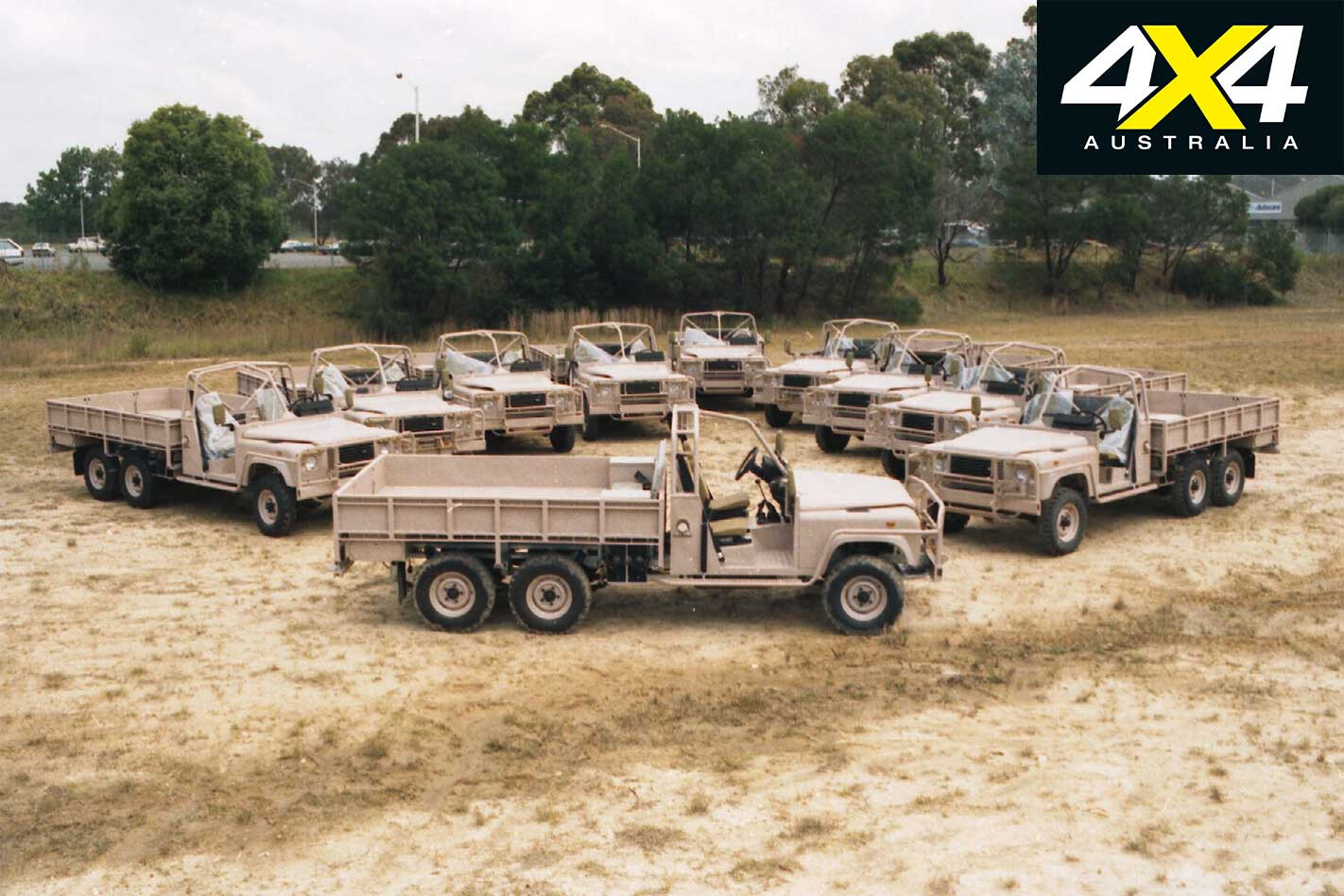
It had been a long slog even to get to contract approval stage for Land Rover Australia, with the company bidding for both the 1-tonne and 2-tonne payload vehicle contracts and having to wait two years while the Australian Army tested LRA’s vehicles, as well as the competitor Jeep (J10) and Mercedes 300GD, before full-time construction could begin.
The vehicle’s many mods from the ‘standard’ 4×4 110 (and earlier 6×6 Landy) included a wider cab (capable of carrying combat-gear-equipped troops three-abreast), a wider track front and rear (a heady 200mm wider than the 110) and a (comparatively) ‘beefed-up’ 90kW/314Nm Isuzu 3.9-litre turbo-diesel.
The eventual contract saw LRA building and supplying 588 6×6 vehicles. This 588 comprised eight variants: Cargo, Cargo with winch, Air Defence with winch, RBS70 and a separate Rapier variant, winch-equipped ambulances, a general maintenance rig (also winch-equipped), an electronics repair vehicle, and the famous LRPV (with, yep, a winch of course).
On top of these, there were numerous other variants, including dual-cab, firefighting, mobile command post, light-armoured, personnel carrier, a variant light enough to be transported by helicopter, and a Comms vehicle, among others.




